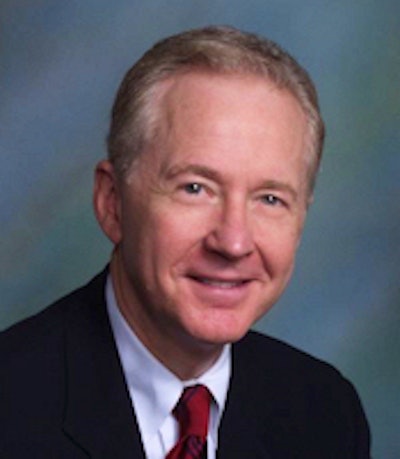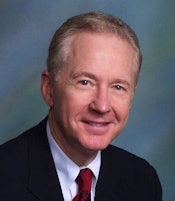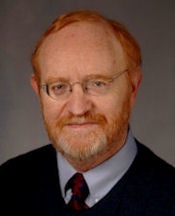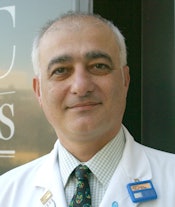
In the face of an increasingly difficult job market for nuclear medicine physicians, a proposal has been floated to dissolve the American Board of Nuclear Medicine (ABNM) and fold its functions into the American Board of Radiology (ABR). The combined organization would oversee a new, broader certification for imaging specialists.
A joint ABR-ABNM task force has released the outline of a so-called dual pathway in which trainees could receive education and certification in both nuclear medicine and diagnostic radiology at the same time, rather than having separate tracks that force imaging specialists to pursue cross-certification on their own.
A number of dual-training pathways are already being established by academic programs "due to economic forces favoring employment for trainees who are dual-certified" in nuclear medicine and diagnostic radiology, according to the proposal.
But the idea has raised some concerns, particularly among nuclear medicine physicians who are worried that eliminating an independent ABNM and the separate training path will affect the long-term health of the discipline.
Difficult job market
The ABR-ABNM proposal comes at a time when the job market remains dire for nuclear medicine residents entering the workforce. The culprit behind the worsening outlook is widely viewed to be the rise of hybrid imaging, as nuclear medicine residents typically lack the training to interpret the anatomical component of hybrid PET/CT, SPECT/CT, or PET/MRI exams.
Indeed, in a 2014 survey of nuclear medicine residents, many cited their limitations in reading hybrid images as a reason for poor employment prospects. Fewer than half of the respondents thought they were ready to independently interpret CT for all pathology.
To help remedy the lack of job opportunities, a 2013 survey of nuclear medicine residency program managers advocated combining nuclear medicine residency programs with radiology to give graduates dual certification from ABR and ABNM.
The current proposal would go a step further, as outlined in an April 3 letter from the task force:
- It would create a single trainee pathway based on a core curriculum in diagnostic radiology and nuclear medicine, with a new certificate in nuclear medicine/diagnostic radiology (NM/DR) that would replace current, separate certificates.
- It would create a new discipline of nuclear medicine/diagnostic radiology under the umbrella of ABR, while dissolving ABNM and nuclear radiology fellowship programs. The new combined organization would be responsible for certifying future trainees, as well as recertifying physicians with ABNM and nuclear radiology credentials.
- ABR would have its nuclear radiology trustee replaced by dedicated trustees in NM/DR who have both ABNM and ABR credentials. These trustees would represent the new discipline on ABR's board of trusteees.
In terms of response, many questions have already been raised about how the actions could affect nuclear medicine and molecular imaging going forward.
"At this point, it is very preliminary, but our inquiries have not received any information that would lead us to believe that what we want to do, or what we propose to do, is not achievable," said ABR President Dr. Milton Guiberteau, a task force member and professor of radiology and nuclear medicine at the Baylor College of Medicine.
Challenges ahead
Guiberteau conceded that there are many obstacles and concerns to address before any kind of consensus is possible between organizations most affected by the changes.
 Dr. Milton Guiberteau from Baylor College of Medicine.
Dr. Milton Guiberteau from Baylor College of Medicine.One of the biggest challenges is gaining support from both practicing radiologists and nuclear medicine physicians and technologists. He believes would-be clinicians coming into the two subspecialties would find the dual training "an attractive pathway" to certification.
Approximately 40% of radiologists and nuclear medicine physicians are already certified by both boards, he estimated. Guiberteau himself holds both certifications.
"Even though I am president of the ABR and on the task force, I certainly understand the issues on both sides of this proposal," he said.
The number of clinicians with both ABR and ABNM certifications has been on the rise over the past decade, he said, fueled by the use of hybrid imaging modalities and the desire to improve employment prospects.
"There is an advantage for folks who can do more than just nuclear medicine and who can read CT, PET/CT, and PET/MRI, rather than having just a single person read an image in a collaboration," Guiberteau said.
Another challenge is how training would accommodate individuals who come from other specialties, such as internal medicine, endocrinology, or cardiology, and want to become full-fledged nuclear medicine physicians.
"I think those are the two areas that need to be clarified significantly before we would be able to move forward," Guiberteau said.
He also knows that the proposal would mean a significant change for nuclear medicine practitioners and their community.
"Under this proposal, basically dissolving ABNM is something is terms of their tradition and in terms of their culture that would not be an easy decision for some," Guiberteau said.
Community reaction
The task force currently is soliciting feedback from the American Board of Medical Specialties (ABMS) and the Accreditation Council for Graduate Medical Education (ACGME), along with other organizations such as the Society of Nuclear Medicine and Molecular Imaging (SNMMI), which would be greatly affected by the plan.
 Dr. Peter Herscovitch, 2014-2015 SNMMI president.
Dr. Peter Herscovitch, 2014-2015 SNMMI president.In a June 4 letter to the task force, Dr. Peter Herscovitch, 2014-2015 SNMMI president and director of the PET department at the U.S. National Institutes of Health (NIH) Clinical Center, outlined a series of issues that need to be addressed before the organization could endorse any plan.
"Any such proposal, especially one that includes dissolving ABNM, should include a clear articulation of the problems in our field and how the proposal will address these problems," Herscovitch wrote. "It is not clear how abolishing ABNM and developing a merged nuclear medicine/diagnostic radiology program will strengthen nuclear medicine."
He did cite several issues that nuclear medicine is facing, such as appropriate training to meet the growth in hybrid imaging, the difficulty of ABNM-only certified physicians in finding employment, and the desire of many trainees to achieve dual ABNM and ABR certification.
But he cautioned that de-emphasizing nuclear medicine would stymie the growth of targeted radiotherapy and molecular imaging. Such a proposal "would effectively eliminate nuclear medicine training opportunities for cardiologists, neurologists, and endocrinologists" who have been "an important source of research and progress in molecular imaging."
Herscovitch also offered several questions for the task force, including the following:
- What radiology procedures will future NM/DR diplomates be able to perform, and what will their employment prospects be?
- What will be the duration of the training program and its nuclear medicine component; will it provide the same depth in nuclear medicine as the current three-year dedicated nuclear medicine program?
- Does the proposal offer any substantial advantages over current dual pathways? How will this promote and facilitate the recruitment of new nuclear medicine trainees?
- Will future diagnostic radiology diplomates who receive only four months of nuclear medicine training still be certified to practice the full scope of nuclear medicine?
SNMMI cannot support the task force proposal until more information becomes available and a "robust discussion of other options" occurs, he added.
When asked about the letter, Guiberteau said there were no questions in the communiqué that have not already been discussed by the task force. "All of those questions need to be sorted out, and we believe they are solvable to the satisfaction of the majority of participants and stakeholders in the change," he said.
Next steps
In the meantime, Dr. Hossein Jadvar, PhD, 2015-2016 SNMMI president and an associate professor of radiology at the University of Southern California, said the society will provide information on the proposal to its members, offer a forum to voice opinions, and share those comments with the task force.
 Dr. Hossein Jadvar, PhD, of the University of Southern California.
Dr. Hossein Jadvar, PhD, of the University of Southern California.Jadvar estimated that among its 18,000 members, SNMMI has some 3,700 physicians. Approximately one-third of those physicians have only ABNM certification, 20% to 25% are certified by ABR and ABNM, and about 15% are only ABR-certified.
"This scenario with ABR and ABNM deals directly with this core group within our membership," Jadvar said. "Traditionally, there have been physicians from internal medicine, endocrinology, cardiology, and neurology who also have reached into nuclear medicine."
One issue that needs further clarification is the fate of current physicians with only ABNM certification.
"Are they supposed to go back to residency and finish another type of training?" Jadvar asked. "I don't think so, but details such as these are especially important. I am sure the task force has thought of this and will share it in time."
Guiberteau acknowledged that the plan "has some measure of risk" in dealing with two different specialties and two different boards.
"I think it will require a lot of thought and detail on how to be fair and to accommodate all parties," he said. "In that lies the complexity -- not with just the people, but with the training pathway to the future."
The task force plans to gather feedback over the course of the summer and then evaluate the responses.
"If [the proposal] does proceed, we would hope to move by the end of the year to sort out some of these details that are of concern," Guiberteau said.
"Fundamentally, the task force, the ABR, the ABNM, everybody wants the field of nuclear medicine to continue to flourish," Jadvar said. "All the stakeholders want the vitality and growth in nuclear medicine to remain. Whatever contributes to that is a good thing."




















